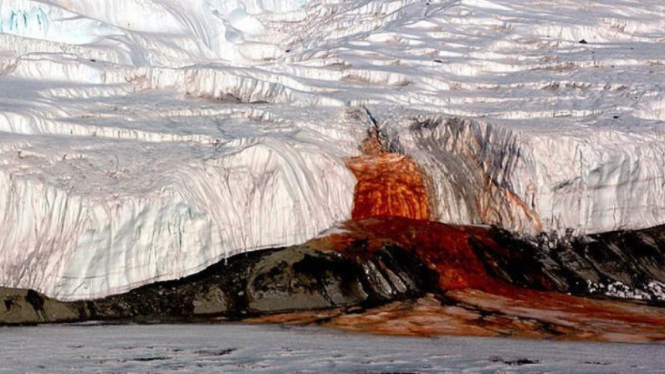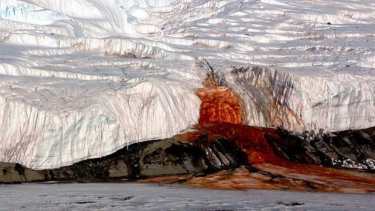- Atlas Obscura
VIVA – Blood Falls is a phenomenon of the Taylor Glacier melting into Bone Lake, Arctic, known to have occurred a century ago. In 1911, scientists discovered a blood-red glacier in the middle of an icy white plain.
At that time, scientists thought that the red color was caused by algae that froze the ice. Unfortunately, this was dismissed a century later. Then most recently, researchers have discovered that the deep red hue that makes the Taylor Glacier flow as red as blood is the iron salts that seep out of the ice.
The iron salts allegedly turn red when they come into contact with air. In a 2017 study, scientists found that Taylor Glacier was formed approximately 2 million years ago.
The glacier trapped a saltwater lake underneath. Millions of years later, the ancient lake reached the edge of the glacier and released saltwater. Earlier, in 2015, researchers discovered a network of rivers flowing through cracks in the glacier using ice-penetrating radar. This means that liquid water can exist inside extremely cold glaciers.
Blood Falls
- Atlas Obscura
The University of Alaska Fairbanks glaciologist Erin Pettit said at the time that air releases heat when it freezes and that heat warms the colder ice around it, "The heat and lower freezing temperatures of the brines allowed for the movement of fluids. Taylor Glacier is now the coldest glacier known to have flowing water," Erin was quoted as saying by Insider.
In another finding regarding Blood Falls, in 2009, researchers learned that underwater lakes are home to unique residents consisting of microbial communities that can survive in extreme conditions, without light or oxygen.
To survive, they utilized iron and sulfate. At the time, researchers believed the lake, which was trapped under glacier millions of years ago, was teeming with microbes. Researchers now believe that studying the microbes in Blood Falls will be a boon for astrobiology.
They can explain how life could survive on other worlds with similar frozen bodies of water as on Mars.
























